
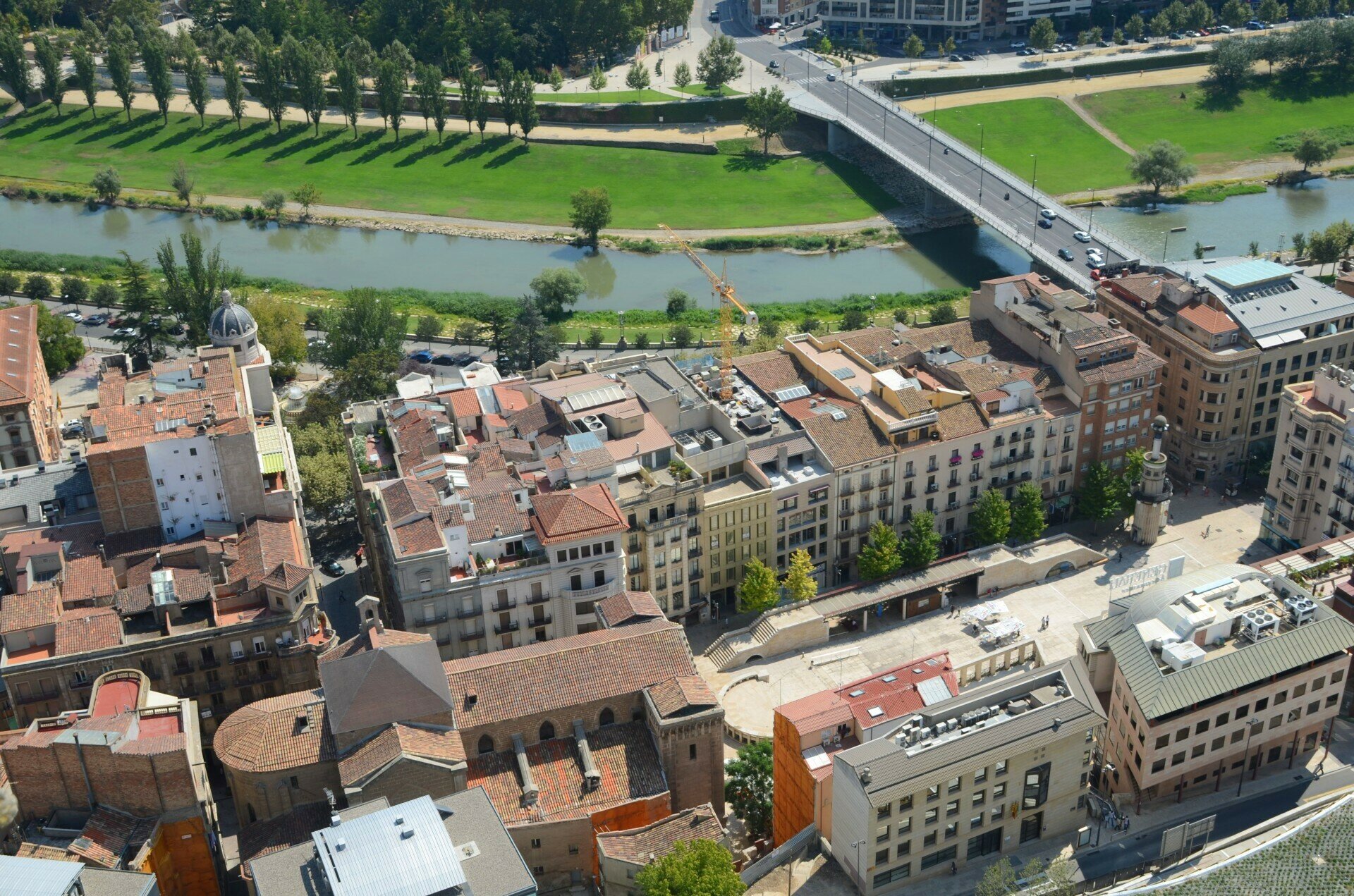
Building-Level Climate Vulnerability in Barcelona: A Knowledge Graph Approach for Heatwave Resilience






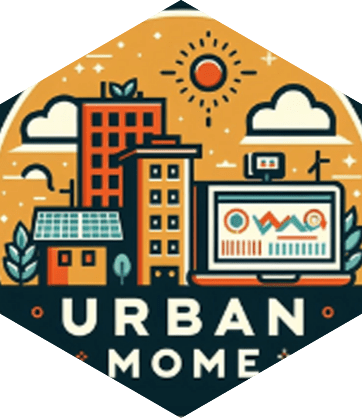
II Jornadas Red URBAN MOME. Barcelona 4 Noviembre 2025


Vulnerability map: Climate-Ready BCN
Source: ICLEI Action Fund 2.0
Budget: €1M
Objective: Support citizens and public authorities in adapting to extreme climate events and reducing energy poverty
Implemented: From May 2023 to December 2025






Climate Vulnerability in Barcelona at building level
The Climate Vulnerability Map of Barcelona is a geospatial analysis tool designed to identify the buildings most at risk during extreme heat events.
It evaluates key performance indicators (KPIs) for buildings and supports climate change planning
It provides an assessment of all residential buildings in Barcelona(61,000)


What is it?

CVI
How we estimate the Climate Vulnerability Index (CVI)
Vulnerability index to asses heat wave resilience
Climate vulnerability is typically framed within three key dimensions defined in the IPCC's Third Assessment Report (Intergovernmental Panel on Climate Change) in 2001:
Exposure
Sensitivity
Adaptive capacity
Although most studies classify indicators using these three categories, our index introduces additional levels to provide a more nuanced analysis while remaining aligned with the traditional framework.



Climate variability and extreme events
- Track changes over time through indicators such as temperature, precipitation, and vegetation cover. Local data helps assess risks related to heatwaves, droughts, and floods.
Energy indicators
- Explore energy use patterns (gas and electricity consumption). Indoor temperature data is crucial for identifying households at risk during extreme heat events.
Building characteristics
- Assess features such as age, use, and size to understand their impact on energy use, indoor comfort, and structural vulnerability.
Indicators groups (KPIs)
Vulnerability map




Infrastructure indicators
Assess the availability of essential public services (schools, climate shelters, social housing) and the strength of social networks to understand community support capacity.
Health indicators
Analyze the relationship between climate and health outcomes to identify vulnerable populations and prepare healthcare systems.
Demographic indicators
Not all groups are equally vulnerable. Analyzing factors such as gender, age, income, migration status, and unemployment allows for the development of more detailed CVIs.
Socioeconomic indicators
Understand urban resilience through factors such as housing costs, energy poverty, household debt, and gaps in social protection, which worsen during economic crises.

Vulnerability map
Indicators groups (KPIs)






Climate vulnerability Index (CVI)
-
Data preprocessing – Select input data to calculate the indicators.
-
Framework selection – Determine which indicators positively or negatively affect the CVI.
-
Granularity definition – Select the spatial scale.
-
Normalization & weighting – Harmonize indicators and assign weights.
-
Aggregation – Combine indicators into groups to obtain a final value.
⚠️ Challenge: Each study adapts its CVI to its specific context and priorities.
CVI Construction
Vulnerability map


Our approach:
Building the CVI
Vulnerability map

Use of empirical cumulative distribution function to assign a value to each building for a given KPI:
🎯 Outcome: A practical tool for both policymakers and citizens to explore climate vulnerability and support decision-making.
Interactive map and CVI:
- View individual KPI layers
- Customized weights
- Adaptable CVI
Use Calculation of aggregated value for a typology T

Use Calculation of aggregated value for a typology T



Data sources & harmonization








BEEMind: Data ontology
The ontology at the core of our solutions
Applied semantic web technologies:
Understanding and organizing data is as important as the algorithms themselves

Massive data integration




3. Data at building level
2. Data at census code level
1. Data at postal code level
How to integrate and link data?


- Cadastral (INSPIRE + CAT Files). Building characteristics, horizontal distribution. Inferred: shadows from nearby buildings, wall types and orientations, patios, administrative metadata (addresses, postal codes..)
- Energy Efficiency Certificates. EPCs at dwelling level, including information about envelope characteristics and HVAC systems.
- Real gas and electricity consumption readings (monthly at building level, hourly at postal code level)
- Meteorological data (ERA5LAND, and UrbClim project).
- Socioeconomic indicators (Census, income atlases, cost of living...).
- Climate Shelters. Including characteristics and opening timetables
- Administrative layers
- Normalised Difference Vegetation Index (NDVI). An aggregation of a buffer around each building was computed
- Tourism-related establishments
- Health data. Mortality and morbidity due to extreme heat events
Main data sources

Heterogenous data ingestion

Massive data integration

Data sources
big numbers

Massive data integration
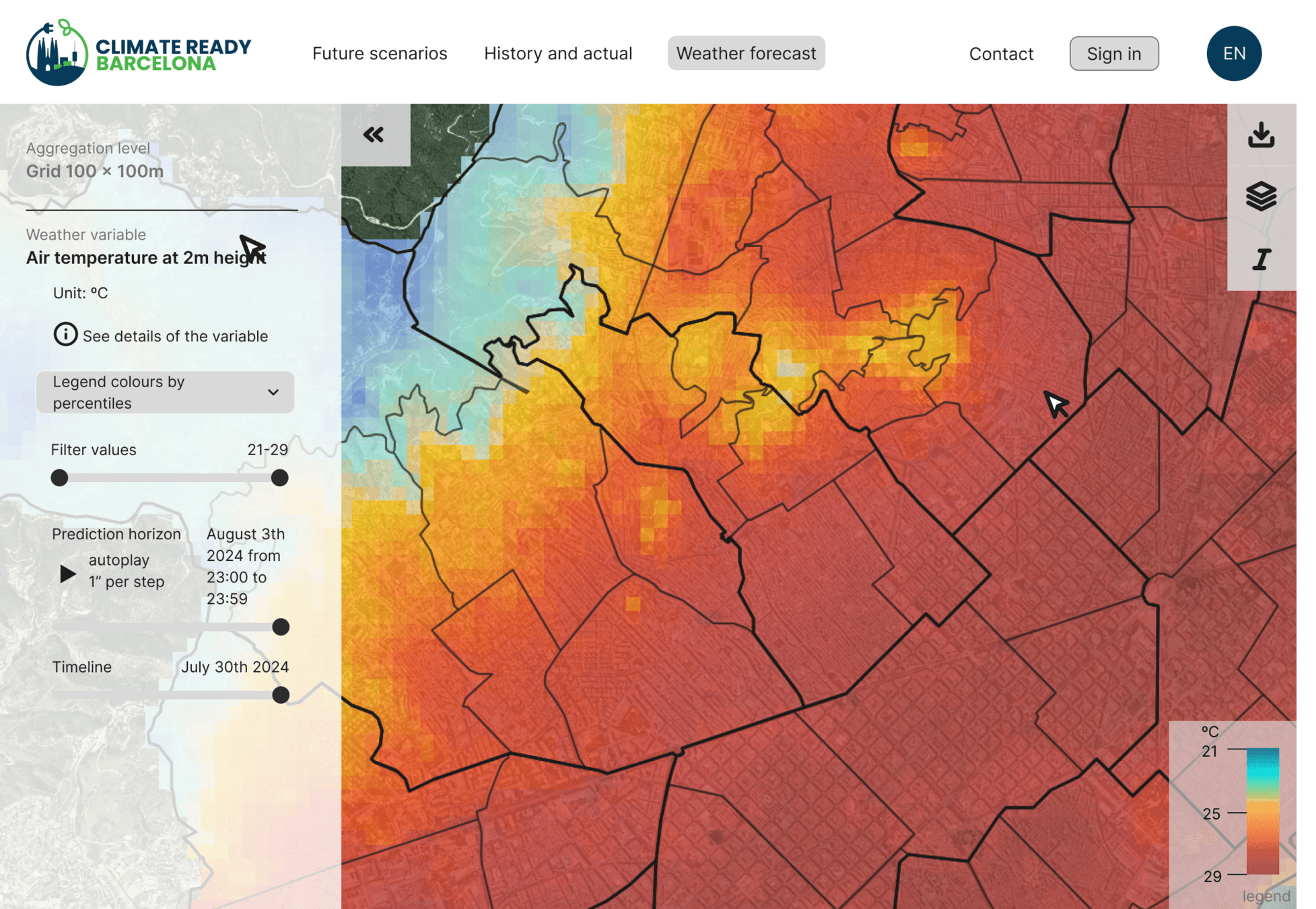
61,000
1 Milion
200.000
Buildings


Households
EPC

10,222
3 Milion
20.000
Zones (microcli-mate model)


KPIs visualized
Heat waves warnings and tips

1,050

Households

Interoperable web semantic frameworks

- Standardized schema (OWL/RDF Turtle) and shared vocabulary for describing IoT devices, buildings and urban areas
-
Reuse & interoperability
-
buildings, physical objects:
saref, s4blg, s4city, s4agri - systems, measurements:
ssn - geospatial:
geosp - units:
qudt
-
buildings, physical objects:
BIGGONTOLOGY:
Semantic reference ontology
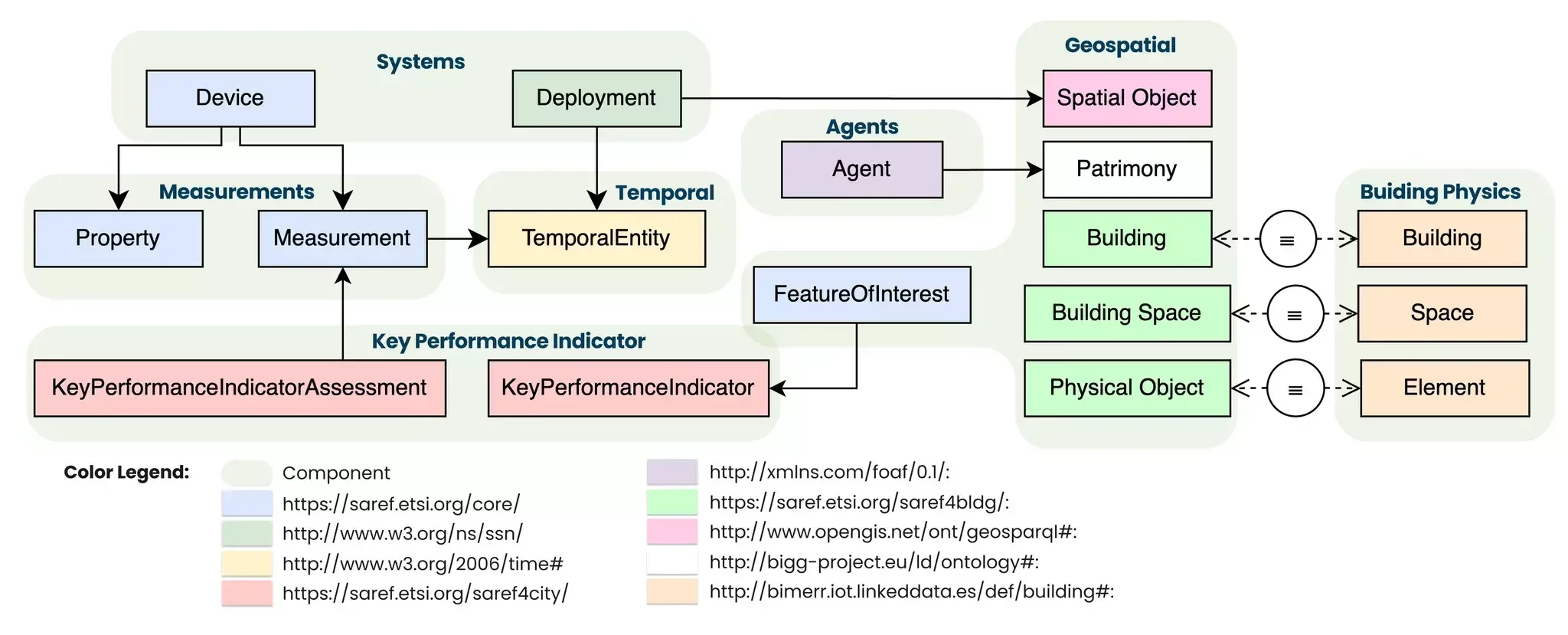

Knowledge graph
Knowledge graph: Structured representation that connects geospatial data with various entities and their relationships, enabling better analysis and reasoning about geographic information.



Modelling








-
Overall predictive model: heterogenous temporal graph
MindCity: Modelling
Vulnerability map

Graph Convolutional Neural Network (GCNN) models
To enable learning patterns, fill knowledge gaps and predict scenarious from geo-structured data



2. Weather downscaling microclimate model
Complementary models
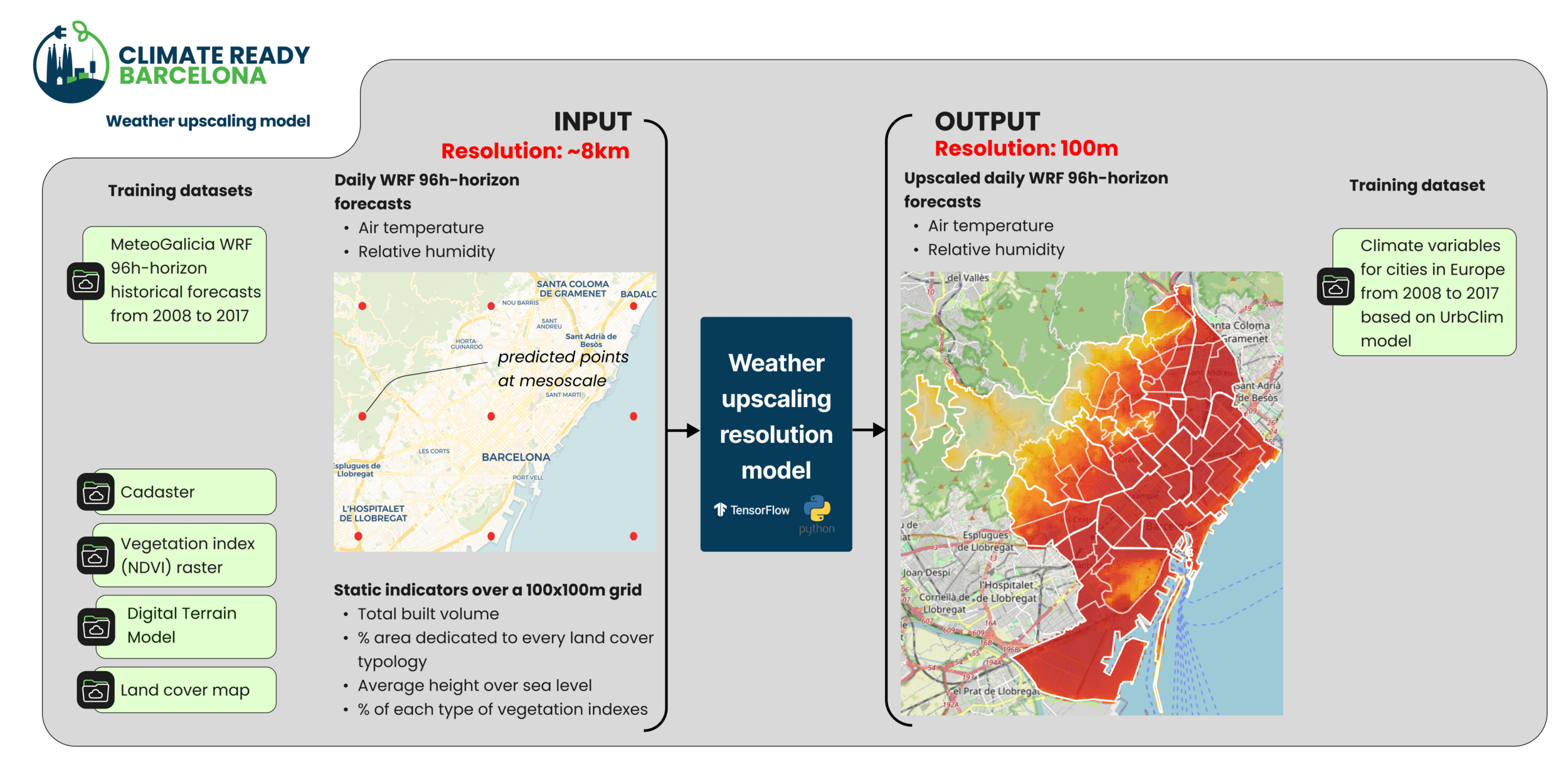
Weather
Cat boost decision tree



2.1. Heat waves prediction and communication
Complementary models
Weather
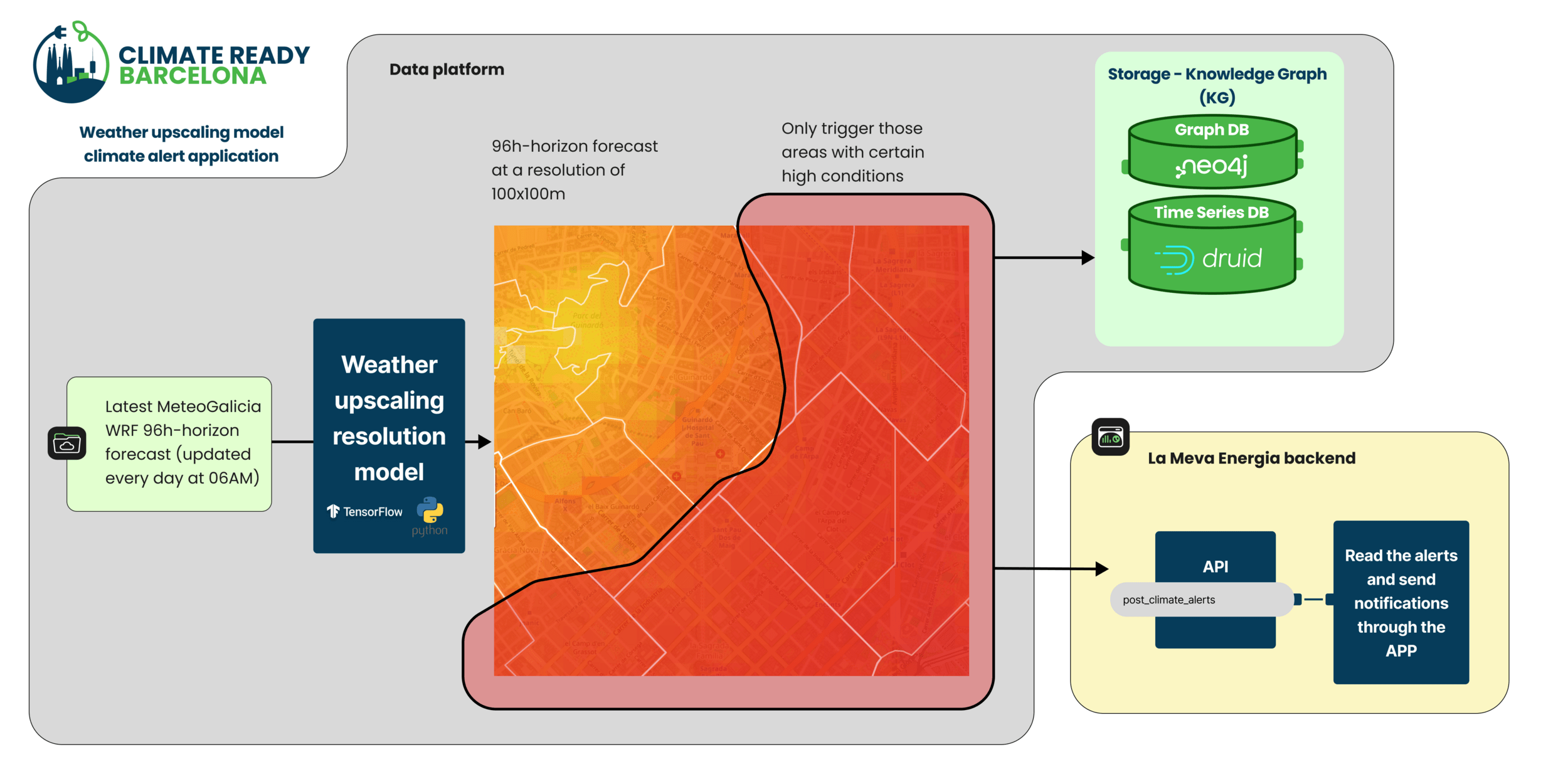


3. Thermal demand models of buildings
Simulation of the thermal energy demand of 37,000 residential buildings.
The simulation engine is based on Reduced Order Grey Box Models (RC models) trained with TRNSYS simulations:
- Building-level predictions for space heating and cooling
- Total energy needs under 3 typologies and 17 archetypes and 5 indoor set point temperatures
- Predicting 5 retrofitting scenarios and 2 HVAC systems
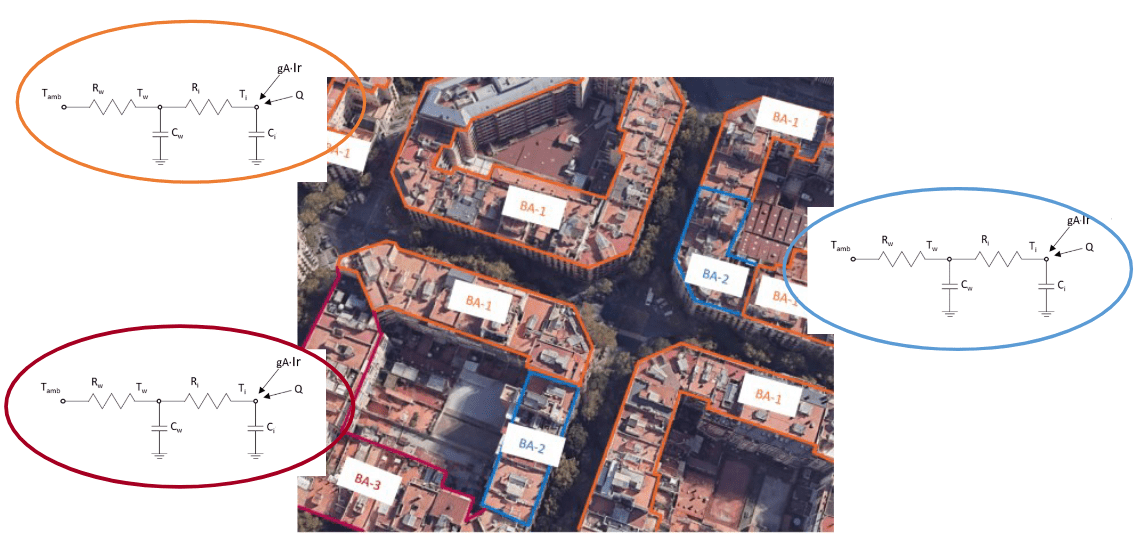
Complementary models
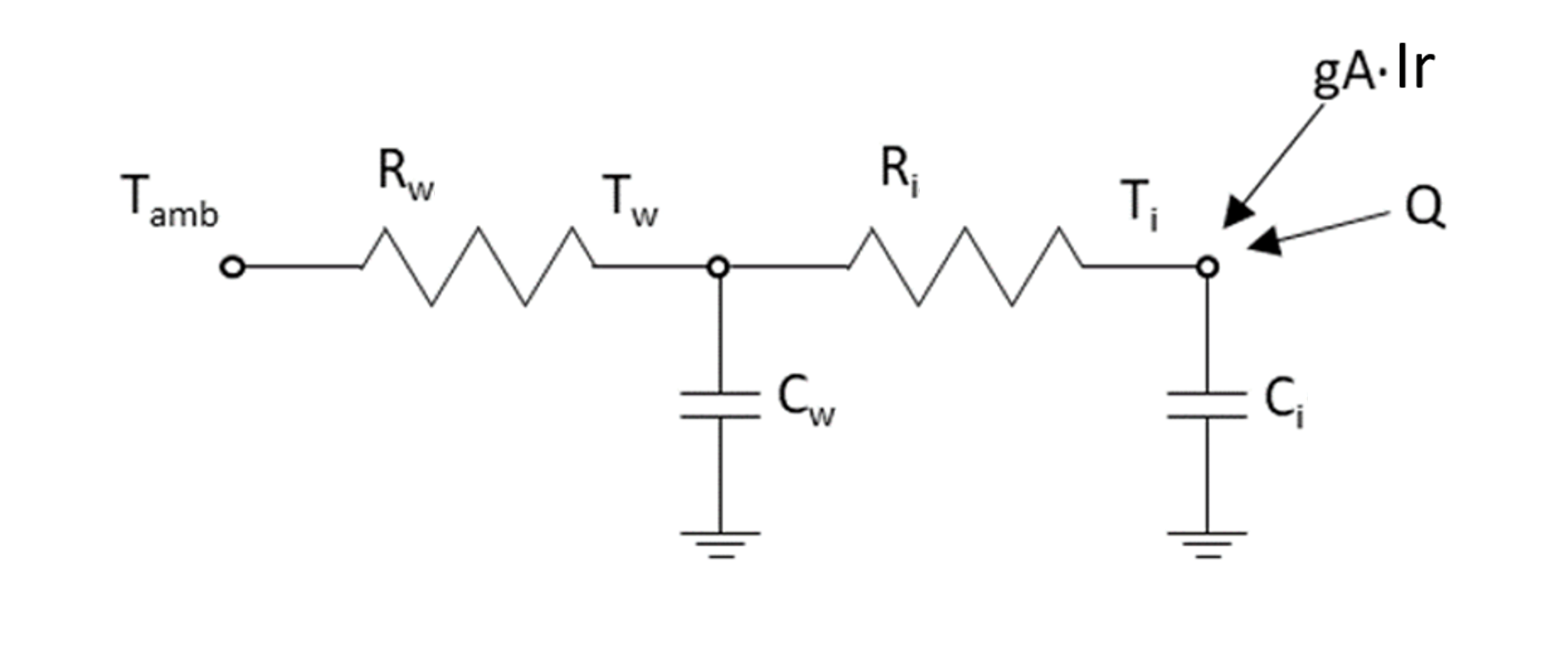

big data IT architecture: ENMA

Software architecture
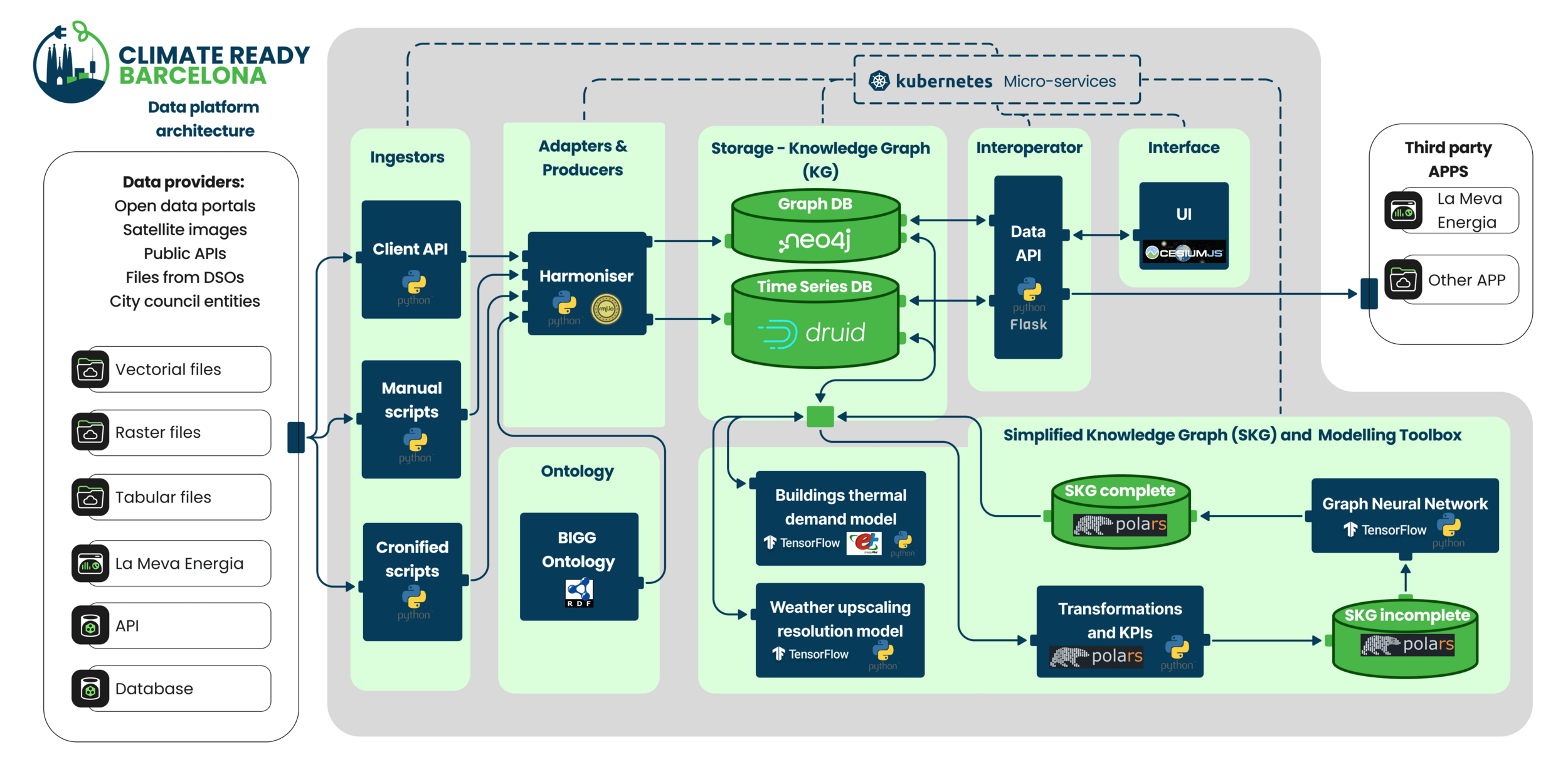


Interactive visualization







MindCity: Climate Vulnerability Map Visualization
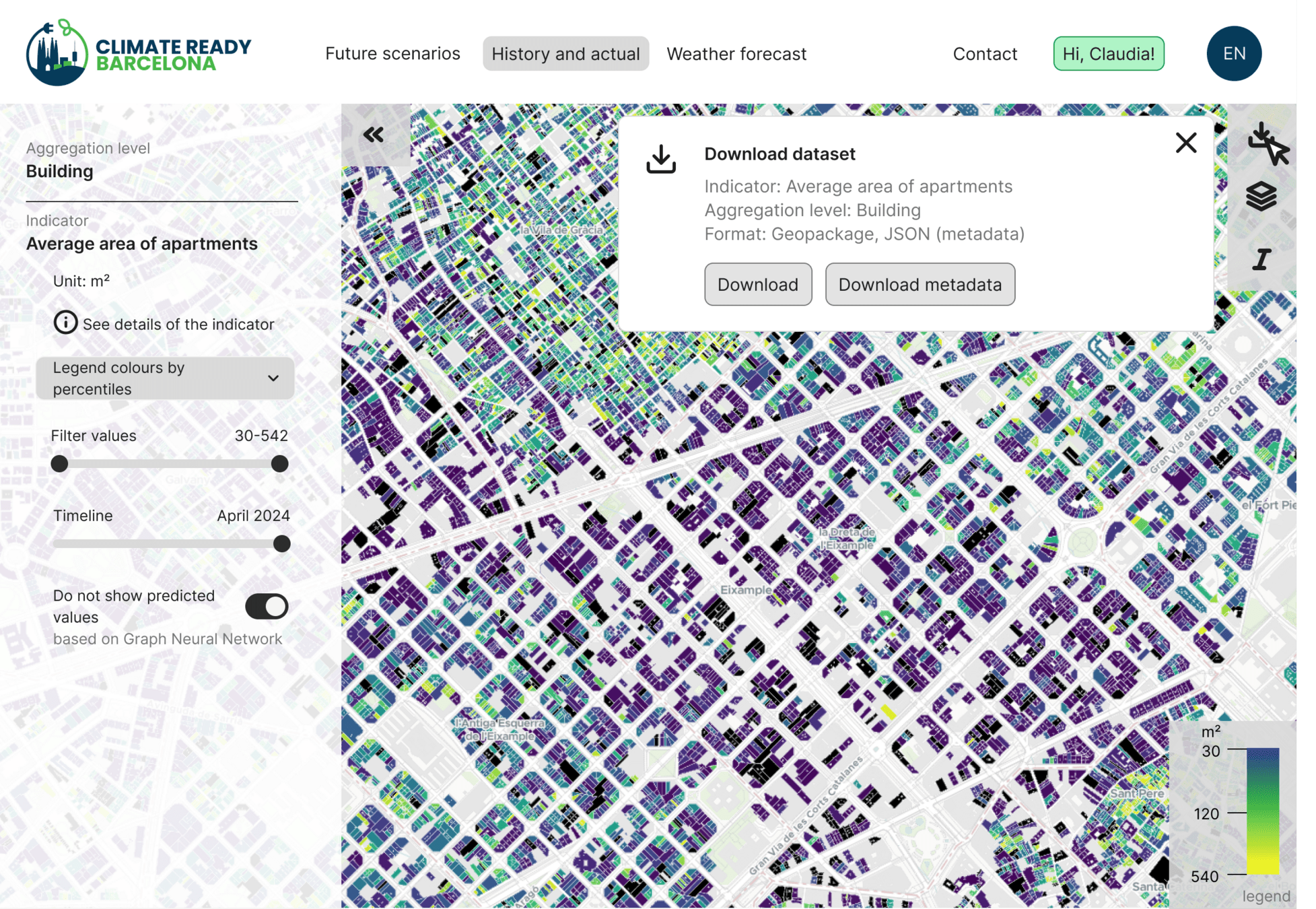
Export and data visualization
Vulnerability map
Vulnerability map
https://maps.climatereadybcn.eu/


Index evolution by streets and buildings

Queries and forecasts
Vulnerability map
MindCity: Climate Vulnerability Map Visualization

Thank you
Jordi Cipriano
Director of the Innovation Unit BEEGroup
cipriano@cimne.upc.edu









UrbanMome-Nov2025
By CIMNE BEE Group
UrbanMome-Nov2025
Solucions basades en intel·ligència artificial per a l'augment de la resiliència climàtica en edificis i entorns urbans
- 57



